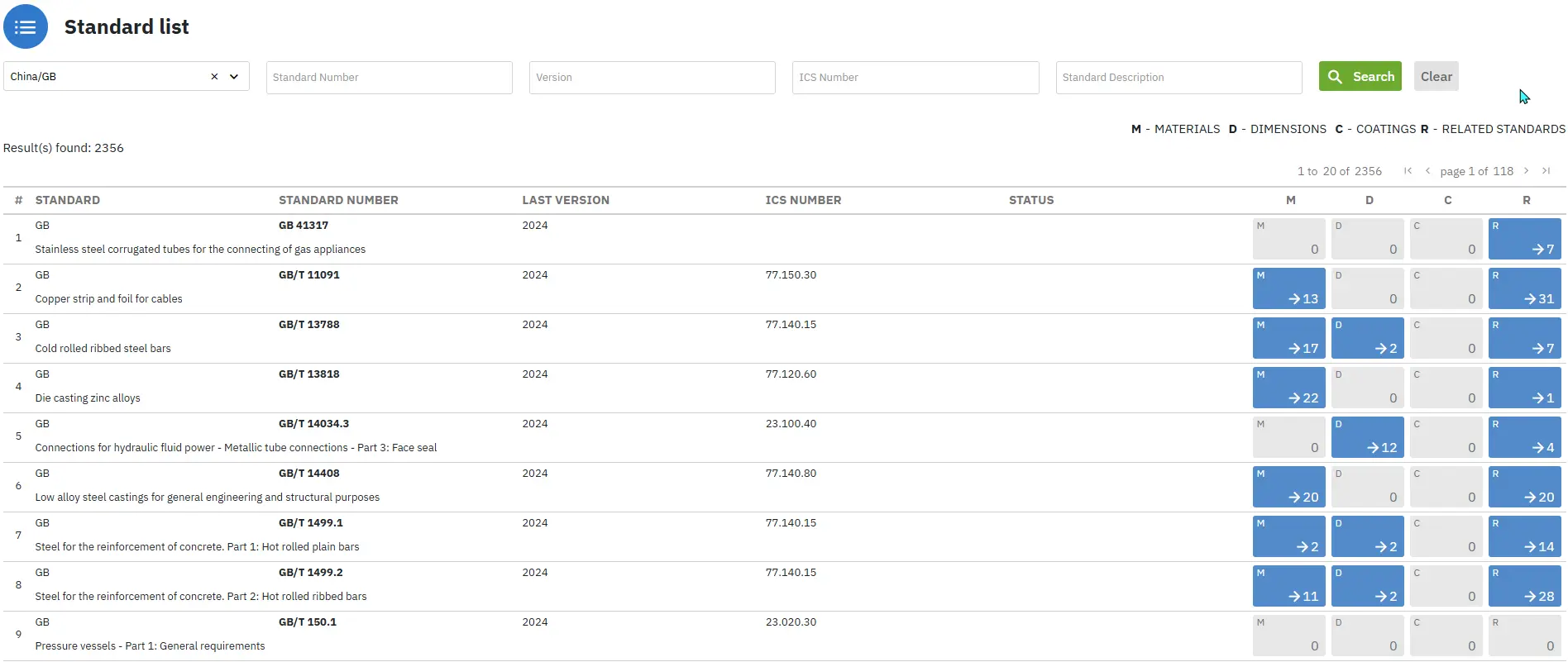Introduction to the GB Standard Designation System
Abstract
The GB standard designation system is a comprehensive framework for classifying iron, carbon, and alloy steels in China. It outlines various delivery conditions and provides specific designations for different types of steel, including structural, tool, and stainless steels. This article explains the structure of GB designations, their meanings, and the relevant standards.
Overview of GB Standards
The Chinese national standards (GB) cover a wide range of steel products, including plates, strips, sheets, bars, wires, castings, and forgings. The designation "GB" stands for Guojia Biaozhun, which translates to "national standard." These standards are issued by the Standardization Administration of China (SAC) and are recognized by the Chinese National Committee of the ISO and the IEC.
Recommended steel standards are prefixed with "GB/T," where the "T" stands for "tuijian," meaning "recommended." Following this prefix is a numerical code that forms the remainder of the standard designation.
Designations for Non-Alloy and HSLA Steels
Non-alloy common steels and High-Strength Low-Alloy (HSLA) steels are designated with the prefix letter "Q," followed by the yield strength value in megapascals (MPa). For instance, Q235, Q345, and Q390 represent non-alloy common steels and HSLA steels with yield strengths of 235, 345, and 390 MPa, respectively.
For non-alloy structural steels and alloy structural steels, numerical codes represent the average carbon content multiplied by 100. For example, the code "45" indicates a steel with 0.45% carbon content. Alloy elements in steel are represented using descriptive codes with chemical symbols, followed by their average content. If the content is less than 1.5%, only the chemical symbol is used. For example:
- 34CrNi3Mo: Contains 0.30–0.40% C, 0.70–1.10% Cr, 2.75–3.25% Ni, and 0.25–0.40% Mo
Designations for Tool Steels
Non-alloy tool steels are indicated by the prefix "T," followed by numeric codes representing the average carbon content multiplied by ten. For example, "T8" signifies an average carbon content of approximately 0.80%. When the average carbon content exceeds 1.0% in alloy tool steels, the carbon content is not specified in the designation. Examples include:
- CrMn steel: Contains 1.30–1.50% C, 1.30–1.60% Cr, 0.45–0.75% Mn
- 9Mn2V steel: Contains 0.85–0.95% C, 1.70–2.00% Mn, and 0.10 to 0.25% V
Designations for High-Speed and Stainless Steels
In high-speed steels, carbon content is not indicated, and only descriptive codes with chemical symbols are used to denote alloy element content. For example:
- Tungsten high-speed steel 18-4-1 (T1) is represented as W18Cr4V
- W–Mo high-speed steel 6-5-4-2 (M2) is represented as W6Mo5Cr4V2
Stainless and heat-resistant steels use numeric codes representing carbon content multiplied by ten, followed by chemical symbols of the alloy elements with their content. If microalloy elements are present, only the chemical symbols are shown. For example:
- 9Cr18MoV: Contains 0.85–0.95% C, 17–19% Cr, 0.0–1.3% Mo, and 0.07–0.12% V
When the carbon content is below 0.03% or 0.08%, designations use "00" or "0," respectively, e.g., 00Cr18Ni10 and 0Cr13.
Conclusion
The GB standard designation system provides a structured approach to classifying various types of steel in China, encompassing a wide range of materials and specific applications. Understanding these designations is essential for professionals in the steel industry and can aid in selecting appropriate materials for different engineering needs.
For a complete listing of GB standards covering various material categories, please refer to the provided links for:
- Irons
- Structural and Constructional Steels
- Stainless Steels
- Castings
- Welding and Filler Materials
Trova e confronta immediatamente le proprietà dei materiali cinesi GB!
Total Materia Horizon contiene informazioni dettagliate e precise sulle proprietà di migliaia di materiali secondo gli standard cinesi, aggiornate mensilmente.

Ottieni un account di prova GRATUITO su Total Materia Horizon e unisciti a una comunità di oltre 500.000 utenti provenienti da più di 120 paesi.